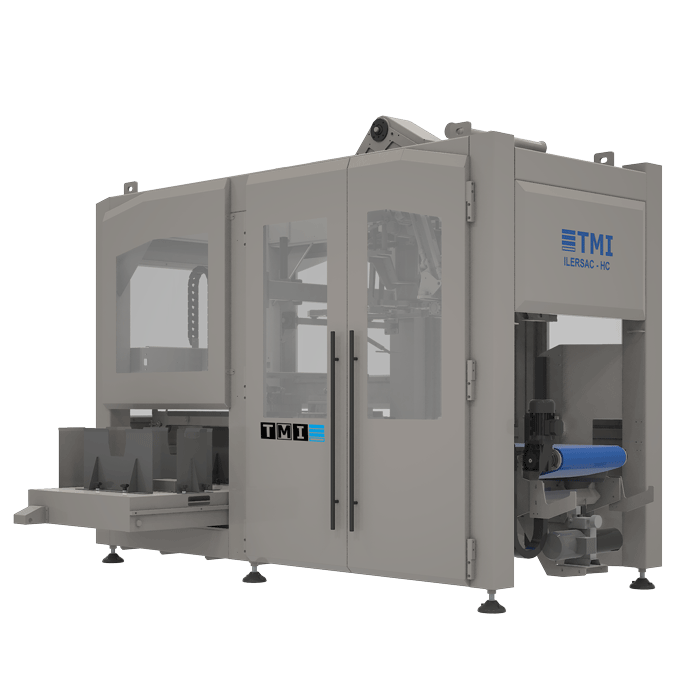Hygienic Automatic Bagging Machines: Ensuring Safety and Compliance in Packaging

In industries where product purity is paramount, such as food, pharmaceuticals, and specialty chemicals, packaging equipment must meet stringent sanitation standards. A hygienic automatic bagging machine is specifically engineered to minimize contamination risks and facilitate thorough cleaning, ensuring both product safety and regulatory compliance.
Understanding the operational principles and design features of these specialized machines is crucial for businesses aiming to maintain the highest levels of hygiene in their packaging processes.
1. Core Components and Hygienic Operation
Hygienic automatic bagging systems integrate several key components, each designed with sanitation in mind:
1.1 Bag Feeding System
- Function: Reliably feeds empty bags, typically from a roll of film (Form-Fill-Seal systems) or a stack of pre-made pouches, into the bag opening mechanism.
- Hygienic Consideration: Ensures smooth, consistent feeding without damaging bag integrity, often using mechanisms designed for easy cleaning and minimal contact with critical surfaces.
1.2 Bag Opening Mechanism
- Function: Utilizes methods like vacuum cups, mechanical grippers, or air jets to securely open the bag mouth, preparing it for filling.
- Hygienic Consideration: Designed to prevent contamination from entering the bag during opening. Components are typically made from non-corrosive, easily cleanable materials.
1.3 Product Feeding System
- Function: Accurately doses and transfers the product (e.g., powders, granules, liquids, solid items) into the opened bag. Common systems include auger fillers, weighers, pumps, and conveyors.
- Hygienic Consideration: Product contact parts are designed according to sanitary principles (e.g., polished surfaces, no dead spots) and often employ quick-release mechanisms for easy cleaning and inspection. The chosen system depends heavily on the product characteristics to ensure gentle handling and prevent degradation or contamination.
1.4 Bag Sealing System
- Function: Creates a secure, airtight seal to close the bag after filling. Common methods include heat sealing (impulse or constant heat), ultrasonic sealing, or clipping.
- Hygienic Consideration: Ensures a hermetic seal to protect the product from external contaminants. Sealing jaws and mechanisms are designed for easy cleaning and to prevent product buildup.
1.5 Control System
- Function: Typically a Programmable Logic Controller (PLC) orchestrates the synchronized actions of all machine components, managing timing, sequences, and safety interlocks.
- Hygienic Consideration: Automates the process to minimize manual intervention, reducing potential contamination points. Advanced systems may include features for process monitoring, data logging for traceability, and integration with automated cleaning cycles (CIP/SIP).
2. Essential Hygienic Design Features
Beyond the function of individual components, the overall design philosophy is critical for a truly hygienic automatic bagging machine:
2.1 Material Selection
- Stainless Steel Construction: Austenitic stainless steel (like grades 304L or 316L) is the preferred material for product contact parts and framework due to its corrosion resistance, durability, and cleanability. Surfaces are often polished to a specific Ra (Roughness average) value to minimize bacterial adhesion.
- FDA-Compliant Materials: All materials, including plastics and elastomers used for seals or gaskets, that may come into contact with the product must comply with regulations like those set by the U.S. Food and Drug Administration (FDA) or equivalent international standards (e.g., EC 1935/2004 in Europe). These materials must also withstand cleaning agents and processes.
2.2 Sanitary Design Principles
- Smooth, Sloped Surfaces: Surfaces are designed to be smooth, non-porous, and free of sharp corners, crevices, or recesses where product residue or microorganisms could accumulate. Sloped surfaces promote self-draining during cleaning.
- Sealed Components: Joints, welds, and connections are designed to be continuously welded and polished or properly sealed with hygienic gaskets to prevent ingress of contaminants. Bearings, motors, and enclosures are often sealed to high Ingress Protection (IP) ratings (e.g., IP65, IP67, or even IP69K) to withstand washdown procedures.
- Accessibility for Cleaning: Machines are designed for easy access to all areas for inspection, cleaning, and maintenance. This may involve quick-release clamps, removable parts, and open-frame designs.
2.3 Cleaning and Sterilization Capabilities
- Clean-in-Place (CIP): Some advanced hygienic bagging machines incorporate automated CIP systems using spray balls or nozzles to circulate cleaning solutions and rinse water without extensive disassembly.
- Sterilize-in-Place (SIP): For aseptic applications, machines may be designed for SIP capabilities, typically using steam or chemical sterilants to achieve a sterile packaging environment.
- Manual Cleaning Protocols: Even with automated systems, designs must facilitate effective manual cleaning procedures.
3. Benefits of Hygienic Automatic Bagging
Investing in hygienic automatic bagging equipment offers significant advantages:
- Enhanced Product Safety: Minimizes the risk of biological, chemical, or physical contamination, protecting consumer health.
- Regulatory Compliance: Helps meet stringent industry standards and regulations (e.g., GMP, HACCP, FSMA).
- Brand Protection: Reduces the likelihood of product recalls and associated damage to brand reputation.
- Operational Efficiency: While designed for hygiene, these machines maintain high throughput and automation levels.
- Extended Shelf Life: Proper hygienic packaging can contribute to longer product shelf life by preventing spoilage.
4. Key Applications
Hygienic automatic bagging machines are indispensable in various sectors, including:
- Food & Beverage: Packaging powders (milk powder, spices, flour), snacks, fresh produce, frozen foods, liquids.
- Pharmaceuticals: Bagging APIs (Active Pharmaceutical Ingredients), excipients, tablets, capsules.
- Nutraceuticals: Packaging vitamins, supplements, protein powders.
- Specialty Chemicals: Handling sensitive or high-purity chemicals where cross-contamination is a concern.
In conclusion, a hygienic automatic bagging machine represents a critical investment for manufacturers committed to product safety, quality, and compliance. By understanding their specialized components and design features, businesses can select equipment that effectively safeguards their products and meets the rigorous demands of sensitive industries.